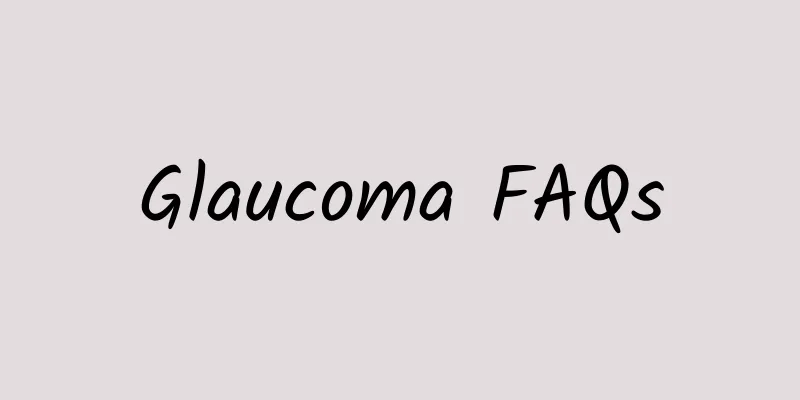Glaucoma FAQs

|
Glaucoma can occur in people of any age, from newborns to the elderly. Because it is more common in the elderly, many people think that glaucoma is an eye disease that only the elderly will suffer from. In fact, this is not the case. Infants, children, and teenagers are all likely to suffer from glaucoma. Teenagers are also susceptible to glaucoma If a child under 3 years old is afraid of light, has larger pupils than other children of the same age, or has watery eyes, you should be alert to whether he or she has glaucoma. You should take your child to the hospital for examination and diagnosis in time to avoid missing the best time for treatment. In addition, teenagers are also prone to glaucoma. Adolescent glaucoma is generally caused by abnormal development of the anterior chamber angle, trauma, inflammation, etc. Therefore, if there is any abnormality in the eyes, it should be taken seriously. If a child's vision suddenly and rapidly decreases, he should go to the hospital for examination in time! Early detection is the key to treatment Since the early symptoms of glaucoma are not obvious, if you have the opportunity to go to the ophthalmologist for a checkup, you must also check your intraocular pressure and optic nerve. In addition, before the age of 40, you should have an eye examination every two years, including intraocular pressure measurement and fundus examination; after the age of 40, you should have an eye examination every year. At the same time, people with diabetes, high myopia, and a family history are all high-risk groups for glaucoma and should be more vigilant and have regular checkups. There are currently three treatment options for glaucoma, including medication, surgery, and laser therapy . For different types of glaucoma, the attending physician will select different treatment options based on the patient's own condition after a comprehensive assessment. However, Professor Tang regretfully said that there is no cure for glaucoma, and all treatments are intended to reduce intraocular pressure more effectively and permanently. Patient follow-up is very important Early diagnosis and treatment of glaucoma are very important, but the importance of follow-up also needs to be paid attention to. First of all, except for a very small number of patients with acute attacks who can feel the increase in intraocular pressure and pain in the eyes, it is generally difficult to detect changes in intraocular pressure. As the number of acute attacks increases, patients may gradually tolerate it like chronic attacks, resulting in the increase in intraocular pressure being ignored, the optic nerve continuing to atrophy and visual field loss. Secondly, for patients who receive different glaucoma treatment plans, doctors need to constantly adjust the treatment plans through regular follow-up. For example, patients who receive laser treatment also need to cooperate with drug treatment. If the drug and laser treatment are not effective, the patient needs surgery. Regular follow-up helps doctors to deal with the complications and side effects of treatment in an early and timely manner. For primary open-angle glaucoma patients, which accounts for 60% to 70% of glaucoma patients, international glaucoma experts agree that it is necessary to find the patient's "target intraocular pressure", and achieving the target intraocular pressure requires reexamination and corresponding examinations. Finally, surgical treatment for glaucoma is different from other "once and for all" surgical treatments for diseases. The success rate of primary glaucoma surgery is 80% to 90%, and the success rate of refractory glaucoma surgery is even lower. Regular follow-up after surgery can detect uncontrolled intraocular pressure as early as possible and provide additional treatment. What exercises can help treat glaucoma? Many glaucoma patients have this perception: having glaucoma is like having a terminal illness, and they can’t do anything, including reading books and newspapers, using their eyes, and even less participating in sports activities. They can only use eye drops at home. In fact, this view is wrong. In fact, glaucoma patients can do physical exercise, especially physical exercise within their ability, because moderate physical exercise can: It dilates blood vessels throughout our body, reduces the resistance of the episcleral vein, and lowers intraocular pressure; Increase the blood supply to the optic nerve and provide more nutrition to the optic nerve; Allowing glaucoma patients to come into contact with more people through outdoor sports will help them focus not only on the disease itself but also on life, which will make them feel better and help them recover from the disease. Scientists studied different types of aerobic exercise, such as cycling, walking, marathon running, jogging, swimming, gymnastics training, etc., and then judged the intensity of aerobic exercise based on the time it took for eye pressure to drop significantly. Finally, they concluded that the time and degree of eye pressure drop does not depend on the time and intensity of aerobic exercise - as long as you stick to proper exercise, it will help treat glaucoma. What precautions should glaucoma patients take when exercising? Avoid strenuous exercise: such as playing football, basketball, volleyball, running with a lot of exercise, aerobics, and any fitness equipment, etc. Because strenuous exercise may cause glaucoma patients. The optic nerve becomes more ischemic and hypoxic: the blood in the whole body is redistributed, the blood volume in the limbs increases significantly, while the blood supply to the head and internal organs decreases, which makes the optic nerve, which already has insufficient blood supply, even more ischemic and hypoxic. Increased intraocular pressure: Vigorous exercise causes the blood vessels in the limbs to dilate and those in the head and internal organs to contract, leading to increased resistance to venous return from the sclera and ultimately increased intraocular pressure. Blood vessel rupture and complications: Vigorous exercise can cause already fragile blood vessels to rupture, leading to more serious complications such as intraocular hemorrhage, retinal detachment, choroidal detachment, and even worse, blindness. Therefore, glaucoma patients must avoid vigorous exercise and heavy physical work. Do not do exercises that require you to lower your head, bend over, or squat for a long time Such as yoga handstands, weightlifting, sit-ups, etc. Because long-term bowing, bending or squatting can significantly increase the blood return resistance of the jugular vein, increase the return resistance of the episcleral vein, and further increase the already high intraocular pressure of glaucoma patients, aggravate the damage to the visual nerve, and aggravate the condition. Drink water slowly It is very important to drink enough water before, during and after exercise, but you should drink it slowly. Drinking 800 to 1000 ml of water in 15 to 30 minutes may also cause increased intraocular pressure. Therefore, glaucoma patients should do moderate exercise under the guidance of a specialist, such as mountain climbing, walking, doing exercises, playing tennis, mountain climbing, etc.; when starting any high-intensity exercise, they should consult a glaucoma specialist to clarify whether their condition is suitable for such exercise; they should choose the appropriate exercise method according to their condition. In short, choosing a reasonable and appropriate exercise method and persisting in it will greatly help maintain physical and mental health and control the disease throughout life. Strictly control diabetes to prevent glaucoma Long-term elevated blood sugar levels can damage blood vessels. Therefore, as long as there are blood vessels in tissue, complications will occur if blood sugar levels are not properly controlled for a long time. The retina is an important tissue that converts light signals into electrical signals. The process of signal transduction and transmission requires a large amount of energy, so the vascular tissue is very rich. When the blood sugar level of diabetic patients is not well controlled, the blood vessels in the retina will be damaged, resulting in insufficient blood and oxygen supply to the retina. The vascular tissue will then produce cytokines that induce new blood vessels, called vascular endothelial growth factor. Vascular endothelial growth factor induces the formation of new blood vessels in the retina and iris in the eye. When the new blood vessels in the iris extend to the angle of the chamber, they block the outflow channel of the aqueous humor in the eye, causing increased intraocular pressure and glaucoma. Since this type of glaucoma is caused by new blood vessels blocking the angle of the chamber, it is called neovascular glaucoma. Solving the ischemia and hypoxia of the retina is the key to treating this type of glaucoma. According to the course of the disease, neovascular glaucoma can be divided into three stages, namely the early glaucoma stage, the open-angle glaucoma stage, and the closed-angle glaucoma stage. Early glaucoma: refers to the presence of new blood vessels in the iris and chamber angle, but the intraocular pressure has not increased significantly. If panretinal photocoagulation can be completed in time to reduce the oxygen demand of the retina, the new blood vessels in the iris and chamber angle will gradually subside. Open-angle glaucoma: refers to the period when new blood vessels have covered the trabecular meshwork at the angle of the eye, and the intraocular pressure is significantly increased, but the trabecular meshwork can still be seen under the gonioscope. During this period, if panretinal photocoagulation can be completed in the shortest possible time, the new blood vessels in some patients may subside, the intraocular pressure will drop, and the condition will be controlled. During the angle-closure stage of glaucoma: the intraocular pressure is usually high, so it is necessary to reduce the intraocular pressure as soon as possible, otherwise the high intraocular pressure will cause optic nerve atrophy and blindness. During the angle-closure stage of glaucoma, if the patient still has vision, anti-vascular endothelial growth factor antibodies should be injected intraocularly as soon as possible, and anti-glaucoma surgery should be completed at the same time to quickly reduce the intraocular pressure, and then panretinal photocoagulation should be performed to reduce the oxygen consumption of the retina and remove the root cause of the generation of new blood vessels. The most comprehensive summary! Things to note in daily life for glaucoma patients / Daily work/ "What should I pay attention to in daily life?" is a question that every glaucoma patient will ask after seeing a doctor. In fact, you can do any general work. Unless the patient's visual field loss is particularly severe and his or her job choice is limited, he or she should avoid work that may cause elevated intraocular pressure, such as sailing, traffic control, driving, and field surveys. From the perspective of maintaining physical health, people should avoid factors such as overwork, staying up late, and mental stress. / Food and daily life/ Pay attention to drinking enough water in divided doses. Excessive water restriction is harmful to health. Drinking a small amount of alcohol is beneficial, but its effect on lowering intraocular pressure varies from person to person, and its long-term effect has yet to be verified. For patients with a family history of glaucoma, coffee and tea can cause increased intraocular pressure. Smoking in the elderly can cause increased intraocular pressure, so it is recommended to gradually quit smoking. We have reservations about the role of food in controlling disease, such as ginkgo biloba and wolfberry, because these studies do not have sufficient scientific basis. Avoid being emotionally excited, nervous, or angry, and maintain an optimistic attitude. People with primary angle-closure glaucoma should avoid moving in the dark for long periods of time and avoid wearing a tight tie. / Recreation and Sports/ Watching TV or reading for too long is not recommended. Exercises that involve breathing, such as singing or playing a flute, may have adverse effects on intraocular pressure. Consult a doctor before deep diving. Patients can fly, but to avoid cabin hypoxia, the best option is to consult a doctor before flying. Avoid bad postures that increase eye pressure Lying on the table: This is a common position for office workers to take naps. Lying on the table with their head resting on their arms often presses on their eyes. Experiments have shown that this position can increase intraocular pressure and even induce glaucoma. Headstand: Headstand is popular in the fitness circle, but when a person is upside down, the gravity on the blood vessels in the head and brain increases, which will increase intraocular pressure. Drink water in one gulp: When you are thirsty, drinking a large glass or a bottle of mineral water at once will increase blood volume and cause increased intraocular pressure. ❖About the Author Wang Zhiqiang, Doctor of Medicine, Director of Ophthalmology Department of the Third Affiliated Hospital of Beijing University of Chinese Medicine, concurrently serves as Secretary-General of Ophthalmology Branch of Chinese Society of Traditional Chinese Medicine Information, Director of Science and Health Education Working Committee of Chinese Medical Education Association, and Beijing Science and Technology Expert. He has been engaged in clinical ophthalmology for nearly 20 years. He is good at combining traditional Chinese and Western medicine to treat ophthalmic diseases such as myopia, amblyopia, pediatric blepharospasm, age-related macular degeneration, optic atrophy, glaucoma, menopausal eye diseases, etc. He is good at cataract, lacrimal duct, pterygium and other surgeries. He advocates the combination of traditional Chinese and Western medicine in the treatment of eye diseases, giving full play to the respective advantages of traditional Chinese and Western medicine, in order to help patients to the greatest extent. He has undertaken and participated in more than 10 national, provincial and ministerial projects, published dozens of papers in various professional core journals such as "International Journal of Ophthalmology", and served as an expert in setting questions for the State Administration of Traditional Chinese Medicine's regular training examination and professional title examination. |
>>: Wheelchair selection and adaptation
Recommend
Why does the uterus grow larger?
Some friends will find that their uterus has beco...
What is a Pap smear?
Cervical smear is actually a common gynecological...
When are water chestnuts available? Are old or young water chestnuts better?
Water chestnuts, also known as waist water chestn...
How to match short boots
Every girl has boots, and there are many types of...
What to do if the incision hurts after cesarean section
Cesarean section is a common choice for women to ...
Female chest pain and tightness
With the accelerated pace of work today, many you...
Why are young people of this generation suddenly obsessed with "spending money to climb stairs"? !
More and more young people are aware of the impor...
How much does it cost to remove the painless ring?
Since the contraceptive ring may be placed in the...
What are the simplest and most effective ways to remove spots?
Many people will be jealous when seeing those wom...
What should I do if my vagina itches during menstruation?
Some women experience vaginal itching during mens...
Bringing new possibilities to cancer care! The world's first full-slice digital pathology model is released
Contributing author: Xu Hanwen (second-year docto...
Can I eat shepherd's purse when I'm pregnant?
In the early stages of pregnancy, many people are...
My period has not been clean for 2 months
It’s February and my period is still not clean. W...
Why don't we remove the shells when frying clams? Why do we fry clams with the shells?
We all know that clams are a popular delicacy. Th...
Did Choi Sulli commit suicide due to depression? What did Choi Sulli write in her suicide note?
After Sulli was confirmed dead, everyone was shoc...









